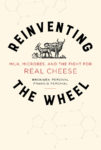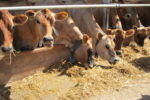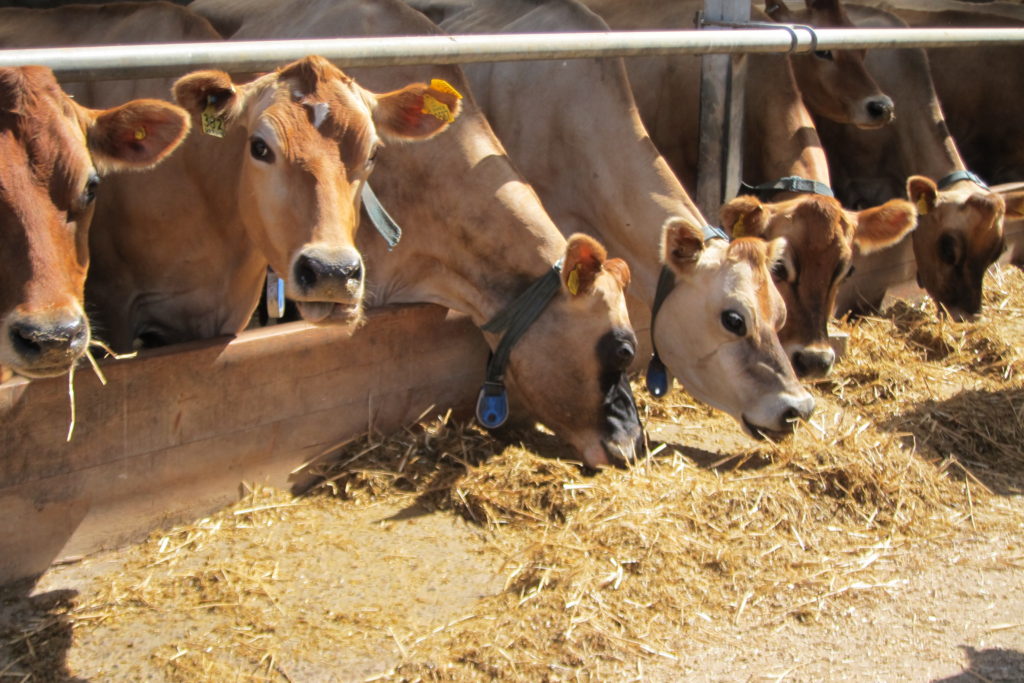
I have been able to arrange to attend the Science of Artisan Cheese conference in England this year, organized by the British Specialist Cheese Makers Association (similar to the American Cheese Society in North America) last held two years ago. It brings together cheesemakers and dairy scientists so that cheesemakers can better understand what is going on in their vats, and scientists can better appreciate the challenges — both practical and regulatory — that cheesemakers face. It’s goal is to foster a “conversation” that can continue long after we have left North Cadbury, Somerset, England.
Following I will outline the programs that I attended over the course of the two day conference. I will also go into depth for one or two of these items for our next newsletter. And I will be very happy to discuss at length an item that any Guild member might be interested in.
DAY !
Reviving the Northern Dairy Shorthorn: a model for using low-yielding breeds within extensive dairy systems
This was a very interesting case study of re-establishing a sustainable farm on what amounts to “conservation land” (in Britain, of course, they have a better designation: an Area of Oustanding Natural Beauty or ANOB). Andrew and Sally Hattan took turns describing their project at Low Riggs Farm in the North Yorkshire dales which involves returning their pastures to native grasses and re-foresting the valley brooks and streams as well as caring for the traditional livestock of sheep and cows.
Their “scheme” {or “plan” in the US} for their lease of the land and the house allows for only heritage and/or rare breeds of livestock on their farm. Initially they started with Belted Galloway cows but have since transitioned to Dairy Shorthorns, and much of their presentation explained why they have made that decision and what they plan to do with the cows for the long term.
Introduction (and Demonstration) of the Obsalim Method for balancing cow nutrition
The term Obsalim is the conglomeration of OBServation ALIMentation, which is an attempt to standardize the kind of observations about a dairy herd that most dairymen (and dairywomen) make every day, but then to tie those observations to adjustments that can be made to improve nutrition and comfort of the herd as a whole. According to the presenter it’s the “missing link for efficient monitoring of the herd” because “the cows tell us about their nutrition.”
This system of observations and adjustments was developed in France by Bruno Giboudeao over 50 years who called it “the language of the rumen.” It includes 188 signs that are scored according to their effect, but is implemented in a simplified version of 62 different cards that a herdsperson can carry around with them during an observation, matching pictures and descriptions on the cards with the associated scores.
“The rumen is the animal” is another way to indicate that rumen stability describes a state of pH and efficiency of digestion. THe factors involved include not only what the animal eats, but when it eats, and how long between feedings the animal is allowed to digest (“ruminate”).
Together with one of the Obsalim evangelists a British dairy farmer from Berkeley Farm in Wiltshire who has used the system, even before the cards were translated into English. “I learned French AND Cow at the same time!” She made the point that there are always observations that can be made about a herd, but the key is whether the herd is “whispering” about it’s comfort level or “shouting.”
The session concluded for me with a visit out to the Montomery herd of Jerseys in South Cadbury where Edward De Beukelaer and his French colleague evaluated the herd while they fed on a mixed ration around 2pm ahead of their 5pm milking. After a good deal of pointing to “symptoms” described on the cards they added up the card scores which recommended that the herd eat a bit later in the day, shortly before they’re milked. If if the farm manager did that the cards suggested that the cows could be fed 10% less concentrate and maintain their present production because they would be more thoroughly digesting the food they’re getting.
The evangelist continually pointed out that the recommendation was only that — unless there were real signs of illness or non-conformaty in the herd the manager could stick to their own management practices. However, the evangelist pointed out that a 10% feed reduction could be a significant cost savings, and then it was possible that a slightly less stressed herd would be healthier in the long run, saving on veterinary services. The cards only *observe* the herd — its up to the herdsperson to respond to the cards.
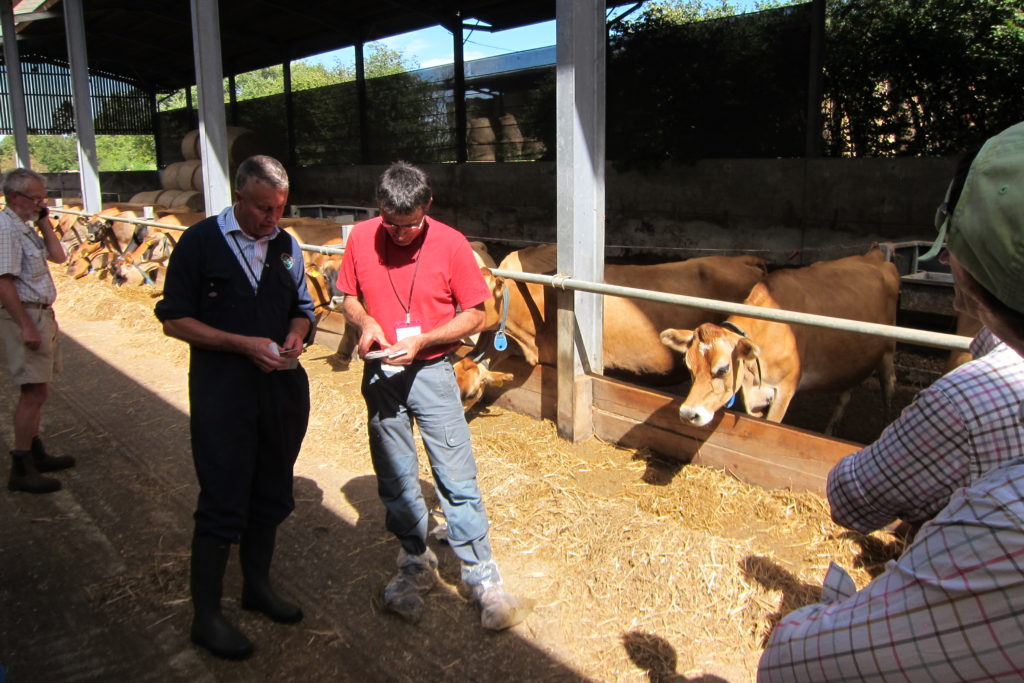
(THe farm manager joined us a bit after we arrived and immediately asked “Symptoms? What is wrong with them?” It appears to be a translation issue where the Frech were using ‘observation’ only as a verb, and ‘symptom’ as the connected noun, which sounds to an English speaker that there is an illness being described. It’s important to understand that the Obsalim Method is not always an “illness” diagnosis but is more often simply an observation (noun) of the herd’s contentment. “Symptoms” merely present one specific aspect of the herd that the herdsperson might want to (or might not) adjust for to better please the rumen…)
Grazing Systems and the Effect of Milk Fat on Bacterial Development in Cheese
Dr. Bruno Martin begin his lecture about grazing systems by pointing out that — aside from the fact that ruminents naturally convert grasses and other vegetative growth into milk and meat — huge swathes of land around the globe are considered “grasslands” and that these grasslands contain the highest volume of plant diversity of any ecosystem. Milk and meat grown with large grass inputs also currently present a “positive image” to consumers who tend to value this.
The French grass-based farmers market their products by saying “What is important in the meat is what it eats before we eat it.” Grazing can also provide what Bruno called “ecosystem services” by managing open land more naturally than by mechanical means.
Grass systems for growing milk and meat are now receiving the scientific attention they deserve. Andre Pochon — a grazing evangelist in Brittany, FR — has done studies that compare farms who either prioritize grazing, or prioritize feeding their milking stock concentrated feed. He has shown that the grazing dairies do produce less milk per animal than the concentrate dairies, but that the grazing dairies have a significantly higher income per worker, as well as a higer farm income per hectare. So the immediate criticism of grass-based dairy practices does not translate too poorer ecnonomic performance, but in fact improves the economics.
The reluctance for farms to use a grazing methods is simple to understand: high-yielding cows (Holsteins specifically) don’t do well on it; milking robots cannot be adapted to it; and the benefits to the ecosystem are not recognized (yet) as tangible and valuable to the community. Climate changes challenge a farmers security of knowing that their land can support the herd, and variable quality feedstock can make for variable output and quality of the milk. This can be challenging to any cheese maker, obviously.
Analysis of the milk resulting from grazing systems and concentrate systems has now been analyzed in detail. Grass system milk is found to have lower levels of saturated fats, and higher levels of oleic, linoleic, natural trans-fats, beta-carotene, vitamins A and E. These composition differences are proportional to the grass input in the diet — they cannot be achived simply by feeding a little bit of grass, but must comprise a majority
Food scientists have measured the day to day variability of milk from herds rotating through paddocks for different time periods. The changes are significant in the fat and protien ratios, probably because the animals will choose the tender leafy bits in the first few days, and then transition to the woodier mature grasses that are left over. So there is always a sharp milk quality change on the day after the herd has been moved into a new paddock. The cheese maker would notice these differences, and ideally would be able to react proactively as long as they are informed about the grazing schedule.
There are many ideas about how a grazing system can be adapted to successful cheesemaking, but so far the best course seems to be asking the cheesemaker to be aware of the inevitability of milk changes and to adapt the process to the variability. It is worth the effort.
Verocytoxin-producing E. coli: Behaviour in cheese and management at the farm level
DAY 2
What Wood Would Do For Your Cheese (if you let it)
This had two very detailed presentations by French dairy scientists about the BENEFITS of using wood in cheesemaking, primarily but not limited to, aging on wood shelves. THe takeaway is that by using GMPs for cleaning and maintaining wood shelving and other wood equipment) the natural biofilms that develop on the wood can protect it from pathogen contamination, and reduce any contamination if something is introduced. [Mariani et. al., Food Control, 2011]
The first presentation focused on wooden aging boards and described the ideal wooden shelf: quarter (radial) sawn spruce cut from the north slope of a mountain and milled in winter. This gives you a close-grain board that will not deform in the humid cheese cave and will have less sap that might affect the flavor of the cheese resting on it. Properly maintained these boards could be expected to stay in use for up to 25 years.
Studies show that raw wood has no bacterial load, and very little mold presence, therefore a new board is a nearly sterile surface. As long as an aging facility already contains a stable aging microbioloty, new boards are quickly colonized by up to 100,000 CFU/cm2 of the resident microbes. So by rotating new boards in with existing boards you guarantee a constant microbial environment for your aging space.
The European standard for food surfaces are that they be “smooth” and “non-porous” where as cheese makers prefer ROUGH (“gross” in their translated English) surfaces — not planed — because otherwise the cheeses will stick to the smooth surface and not aerate correctly during aging. However nation-states are also allowed to amend the generic food rules as long as it doesn’t compromise food safety, so France has developed a GMP of regular cleaning and/or santizing boards of rough sawn wood. And subsequently food scientists have surveyed boards in use, as well as done experiments on new and used boards to prove that they can be just as food safe as any other surface.
In addition these scientists have proved that using wooden vats in traditional cheeses provide proper culture inoculation for the milk that is run through it, and that vats still in commercial use have a very low incidence of contamination with food pathogens.
We’ve known that wood has been used safely in cheesemaking for thousands of years, but it’s only been recently that we’ve understood the science behind this practice. Luckily it comes at a time when regulators either accept (Europe) or (US) are still on the fence about this practice. Te value of this conference is that the scientists doing the work on these issues can communicate directly to the cheese making community.
A Tour Of The Montgomery Cheese Plant

My second “elective” was a tour through the Montgomery cheese plant a few steps up the road from the conference center, led by it’s principal Jamie Montgomery. We tucked into a small yard off the sidewalk and were able to observe the cheese make room through the exterior doors and windows while he describe the specifics of their process. Notable was the fact that they use 7 different culture mixes that are made up from many different cultures collected from cheddar makers in the area many decades ago and now “archived” in a frozen library. Their cultures (not surprisingly) are terribly susceptible to phasge so they rotated their cultures more than once a week according to the cheese maker’s knowledge of the relation between each one.
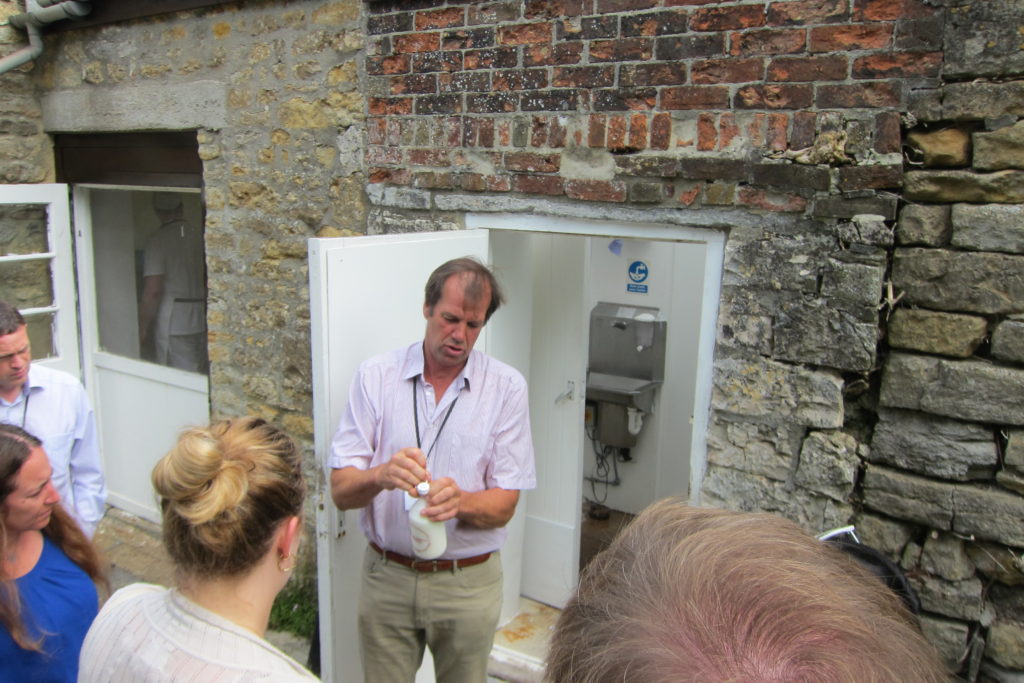
Their cultures are made in large batches and then frozen in sterile liter containers that have a rubber seal in the neck protected by a dribble of chlorinated water. One liter of culture could inoculate several days of cheddar batches but they realized that the cost of each bottle of culture versus the risk of a bad batch because an open bottle had been contaminated made it worth their while to open a new bottle for each batch.
They milk twice a day, but they refrigerate their evening milk and then mix that with the warm morning milk for each day’s cheese batch. Jamie had a LOT to say about peg mills versus chip mills, as well as the fact that milk is pumped only once.
Then we proceeded down the road and into their main farm yard and into the storage area with stacks of 40+ pound truckles of cheddar on wooden boards.
“A good rind on a cheddar is an art form.” Jamie discussed lard quantities, muslin cap bonding, dip temperatures, and many other factors that can make a significant difference many many months later. His family has been making cheddar for decades, but he described an attitude of constant refinement and learning about these voiceless hunks of cheese surrounding him.
The Montgomerys operate a farmstead creamery as well as an agricultural operation that supports it. They grow much of their feed, as well as supplemental crops (like potatoes) that rotate with the feed crops and provide the operation with a bit of extra income. He discussed the cow ration in detail and included a bit about adding corn (“maize:) to the diet to create a little harder fat in the cheese firming up the texture.
We concluded our tour walking down the herd lane back toward North Cadbury Court where the conference was being held. We were surrounded by emerald green pastures partitioned so that the milking herd could have one paddock per day when they’re put out after morning milking something we could see between lectures. After evening they’re moved to the other side of the Court for a different pasture rotation.
Electives Not Chosen
Calculating and Managing Cheese Yield
MilkJam: Fostering Cheese Education
“MilkJam is dedicated to teaching cheesemongers the basics of cheese making (methods & process) and providing a platform for them to test their abilities.” In addition to recent cheesemaking events for cheesemongers and the public, MilkJam recently held a Raw Milk Tasting on the occasion of Raw Milk Appreciation Day 2016. Their members collected raw milk samples from as many dairies around Britain as they could manage from the same day’s milking. These samples were cultured over a few days, and then the MilkJam participants tasted them all to understand the variability of natural cultures found in all raw milk and how they can be similar or different based on geography, breed, and primary feedstock.
Coffee Tasting: Process vs. Raw Materials
Science Tastes Good! (actual title: Crystals on Bloomy and Washed Rind Cheeses)
Salt-im Moisture in Cheese
Phages as Tools in the Dairy and Cheese Structure
Progress Towards Better Tests for M. bovis and Managing Outbreaks
Closing Remarks and Thoughts
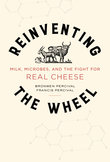 The Guardian has just published an article outlining one of many compelling stories chartered in Bronwen and Francis Percival’s new book on the cheese industry called Reinventing The Wheel. The authors are currently on tour promoting the book at various book AND cheese stores across America.
The Guardian has just published an article outlining one of many compelling stories chartered in Bronwen and Francis Percival’s new book on the cheese industry called Reinventing The Wheel. The authors are currently on tour promoting the book at various book AND cheese stores across America. 